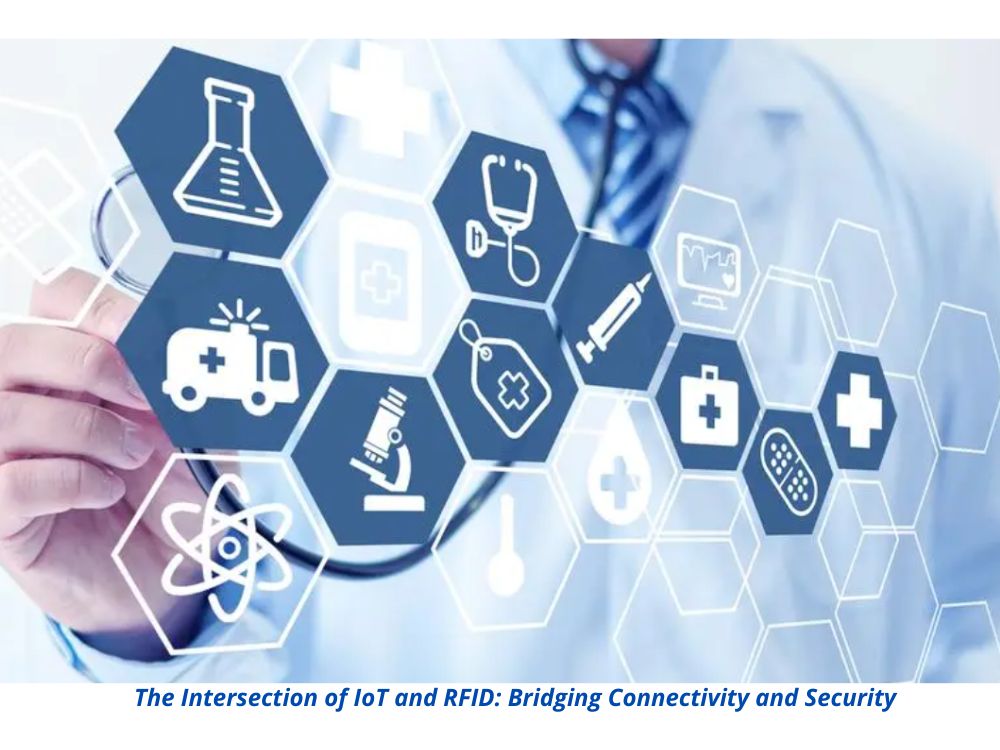
The Intersection of IoT and RFID: Bridging Connectivity and Security
Table of Contents
Summary
This rapid expansion of connected devices presents both opportunities and challenges. With the advent of 5G technology and its impact on IoT capabilities, industries are witnessing unprecedented efficiency and scalability. However, this connectivity also raises significant security and privacy concerns that must be addressed to balance innovation with protection.

Expanding IoT Connectivity
The proliferation of IoT devices is reshaping various sectors, from automotive and healthcare to consumer electronics. As technology costs decrease and broadband access expands, the number of connected devices is skyrocketing. This trend is further accelerated by 5G technology, which offers enhanced data speeds and connectivity.
Projected IoT Market Spending by Region
Region | Projected Spending (Billion USD) | Key Sectors |
North America | 341.6 | Manufacturing, Automotive, Healthcare |
Asia Pacific | 503.4 | Connected Vehicles, Smart Homes |
Europe, Middle East, Africa | 279.6 | Public Safety, Remote Health Monitoring |
Worldwide | – | Connected Vehicles, Smart Homes, Freight Monitoring |
Security Challenges in IoT and RFID Integration
With the growth of IoT, security concerns have become more pronounced. The increased connectivity exposes systems to potential vulnerabilities, making it crucial for businesses to implement robust security measures.
Encryption and Data Protection
For IoT applications involving RFID technology, encryption is essential to safeguard data. RFID readers and tags must support cryptographic algorithms to ensure secure data transmission. The ability to load custom encryption keys and handle encrypted data exchanges between RFID media and host systems is crucial for maintaining security.
Encryption Capabilities
An effective RFID reader should support a range of encryption algorithms, including AES, DES, and 3DES. The reader’s ability to handle encrypted data from RFID tags and secure data transfer to host systems is fundamental for protecting sensitive information.
Secure Communication Interfaces
Communication interfaces play a vital role in the security of RFID systems. While traditional Wiegand interfaces are common, they are increasingly viewed as outdated due to their vulnerabilities. Modern RFID systems should support more secure communication protocols like RS485 or RS232 to mitigate interception risks.
Emerging Trends in RFID and IoT
The integration of IoT and RFID technologies is evolving rapidly. New developments in RFID technology are focusing on enhancing tag functionality and reducing costs.

Advanced RFID Solutions
Advanced RFID Technologies and Trends
Technology | Description |
Flexible RFID Tags | RFID tags that can be combined with printed sensors and batteries |
Direct Printing of Electronics | Technology for printing electronics directly onto products |
Electronic Printing | Cost-effective method for creating chip-less RFID tags on-site |
IoT Strategy for RFID
Effective IoT strategies require a comprehensive approach, incorporating cloud-based solutions and AI-driven analytics. Companies are encouraged to adopt centrally managed systems to streamline RFID data handling and reduce IT support costs.
Key IoT Strategies for RFID Integration
Strategy | Benefits |
Cloud-Based Solutions | Reduces on-site IT support costs |
AI Integration | Enhances data analysis and decision-making |
Flexible RFID Tags | Offers cost-effective and versatile tagging options |
Conclusion
As IoT and RFID technologies continue to advance, balancing connectivity with security becomes increasingly critical. By implementing robust encryption, utilizing secure communication protocols, and adopting innovative RFID solutions, industries can harness the full potential of these technologies while safeguarding sensitive data. The future of IoT and RFID will undoubtedly bring further innovations, and staying ahead of security challenges will be key to leveraging their benefits effectively.
Comments
Hot Products

RFID in Logistics: How to Eliminate RFID Misrouting and RFID Label Failures
RFID in logistics is more than just a tool to speed up processes. It has become a key part of how modern supply chains operate.

What Is RFID Waste Management
Imagine a city where every trash bin speaks — not literally — but through a tiny chip that tells the system when it’s full, when it’s emptied, and where it went. That’s what RFID waste management is doing today.

What are Bolt Seals and their Applications? | Complete Guide
In global trade and logistics, bolt seals play a crucial role in ensuring cargo security and compliance. These small but powerful devices are designed to lock shipping containers, trailers, and cargo doors with a tamper-evident mechanism.

What is an RFID Card Protector? Benefits, Use Cases, and Buying Guide
RFID technology (Radio Frequency Identification) is everywhere: in your credit cards, ID badges, transit passes, hotel room keys, and more. It offers speed and convenience, but it also opens the door to a new kind of digital theft called “skimming.” That’s where an RFID card protector comes in.

RFID Wristbands for Events: Bulk Buying Guide for Organizers
RFID wristbands for events are becoming the go-to solution for organizers who need faster entry, fraud prevention, and cashless payments at concerts, festivals, and sports venues. Unlike paper tickets or QR codes, these smart wristbands use embedded chips to streamline access, secure transactions, and improve the guest experience.

How RFID Tag on Windscreen Improves Vehicle Access Control and Toll Systems
In today’s fast-paced world, vehicle identification needs to be quick, secure, and contactless. An RFID Tag on the Windscreen provides exactly that — a reliable way to manage toll collection, parking, and gated access without stopping vehicles.
Tags
RELATED BLOGS

RFID in Logistics: How to Eliminate RFID Misrouting and RFID Label Failures
RFID in logistics is more than just a tool to speed up processes. It has become a key part of how modern supply chains operate.

What Is RFID Waste Management
Imagine a city where every trash bin speaks — not literally — but through a tiny chip that tells the system when it’s full, when it’s emptied, and where it went. That’s what RFID waste management is doing today.

What are Bolt Seals and their Applications? | Complete Guide
In global trade and logistics, bolt seals play a crucial role in ensuring cargo security and compliance. These small but powerful devices are designed to lock shipping containers, trailers, and cargo doors with a tamper-evident mechanism.




